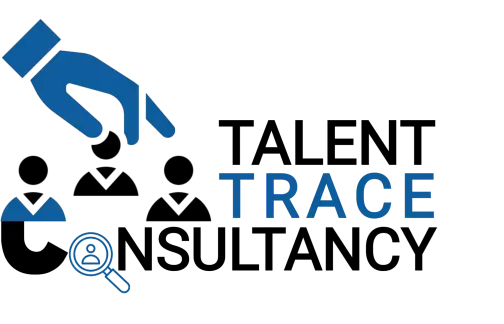But Ethereum is a smart-contract platform for decentralized applications, with lots of projects, cryptocurrencies, NFTs, and NFT platforms running on top of it. One of the most common behaviors that lead to slashing https://www.xcritical.in/ is downtime. The term “downtime” refers to the period of time during which a validator is offline and unable to produce new blocks. This can be due to network delays, software issues, or hardware problems.

But the fact that the Ethereum blockchain consumes a lot less electricity is incredible news already. Many developers will now focus on rollup contracts to reduce transaction costs and enable scalability. While Ethereum developers say the “proof-of-stake” model has safeguards to ward off hackers, others say criminals could attack the blockchain under the new system.
Proof of stake
Rebecca Ackermann is a writer, designer, and artist based in San Francisco. She wrote about the promises of crypto and Web3 for MIT Technology Review’s Money Issue earlier this year. It would be hard to overstate how much industry excitement there has been around this shift. Many hope it can both rehabilitate the reputation of crypto for skeptics and improve the efficiency of Ethereum’s enormous ecosystem of businesses and developers.
The Ethereum social layer is the ultimate backstop – a technically successful attack could still be neutered by the community agreeing to adopt an honest fork. The likelihood that this would end up being profitable for the attacker is sufficiently low as to be an effective deterrent. This is why investment in maintaining a cohesive social layer with tightly aligned values is so important. Honest validators would be incentivized to build on this chain because they would avoid the penalties applied to them for failing (rightly) to attest to the attacker’s chain.
Nominated PoS (NPoS)
Hence they are commonly known as miners and the process is called mining. In principle, a small group of people could take the reins and switch Bitcoin to proof of stake. Since it is an open-source project, Bitcoin’s development relies on decisions made by the community, which in theory includes anyone who wants to participate. Proof of Stake (PoS) is a type of consensus mechanism that is used to secure blockchain networks. Consensus mechanisms are the backbone of all blockchains, as the underlying rules that determine how a network functions.
- Something similar happened in 2016, after Ethereum developers rolled back the blockchain to erase a massive hack.
- The difficulty number represents the cumulative difficulty of all mined Ethereum blocks under the PoW system.
- Crypto experts also say there is a risk that technical glitches could mar the Merge, and that scammers could take advantage of confusion to steal tokens.
- Both proof-of-work and proof-of-stake are mechanisms that economically disincentivize malicious actors from spamming or defrauding the network.
- The aim of a finality delay attack is likely simply to disrupt Ethereum rather than to directly profit, unless the attacker has some strategic short position(s).
We won’t know right away whether the Merge—the moment when Ethereum’s main network joins with the layer that is using the new consensus mechanism—lives up to its transformative promise. Some of the scaling efficiencies that supporters are excited about won’t even arrive until after the Surge, Verge, Purge, and Splurge—other upgrades Ethereum CEO Vitalik Buterin has promised, which may continue well into 2023. In July, Buterin said he’d consider Ethereum only 55% “done” after the Merge. Proof of stake, first proposed on an online forum called BitcoinTalk on July 11, 2011, has been one of the more popular alternatives.
What Is Proof of Stake (PoS)?
A validator allows a user to actively participate in Ethereum’s network security by proposing and attesting to new blocks. One way to mount an attack is to accumulate a greater proportion of the total stake and then use it to outvote honest validators. The greater the proportion of the stake controlled by the attacker the greater their voting power, especially at certain economic milestones that we will explore later. However, most attackers will not be able to accumulate sufficient ether to attack in this way, so instead they have to use subtle techniques to manipulate the honest majority into acting a certain way. This type of attack is not possible on Ethereum because of the finality gadget that ensures all validators agree on the state of the honest chain at regular intervals (“checkpoints”). This simple mechanism neutralizes long range attackers because Ethereum clients simply will not reorg finalized blocks.

Even after a transaction is confirmed as part of the most recent block, it doesn’t mean it can’t be changed or undone. For a short period that follows, a transaction may be vulnerable to attacks from bad actors who try to exploit weak points in the blockchain. Proof of stake (PoS) is the underlying mechanism for Ethereum’s consensus algorithm.
So far 9,500,000 ETH ($37 billion, in current value) has been staked there. The plan is to merge it with the main Ethereum chain in the next few months. Its creator wanted to do away with the control that third parties, often big banks or states, exerted over financial systems. The last time anyone tried to make a major change to Bitcoin was with Bitcoin Cash, an effort to increase the block size so Bitcoin could scale and become more useful as an actual currency. A new class of crypto investors have bold plans to rebuild society from scratch. But their pet projects risk repeating the region’s long history of corporate colonialism.
Instead of expending computing energy to solve a puzzle, the nodes validating new transactions stake their own value as collateral. These nodes then run efficiently and honestly to avoid losing that collateral. In the Ethereum PoS system, the sum of crypto staked by validator nodes (32 ETH) acts as a security deposit. Since the amount can be “slashed” by the network (if a validator fails to behave appropriately) validator nodes have a vested interest in behaving in a way that benefits the blockchain. A Proof of Stake (PoS) network is a system that uses staked cryptocurrency to secure itself.
Another potential upgrade is single-slot finality(opens in a new tab), which protects against attacks based on message timing by finalizing the chain after just one slot. Cryptocurrencies have no central guardian, like a bank, to oversee their public ledgers—the shared digital record of every transaction on the blockchain. In proof of work, the approach Bitcoin relies on, a worldwide network of computers—known as “miners”—spends electricity trying to win a lottery of sorts. Whoever wins gets to append the next block and collect new coins in the process.
Here we’ll compare some of the risks, rewards and requirements of the different ways you can stake. The trade-off here is that centralized providers consolidate large pools of ETH to run large numbers of validators. This can be dangerous for the network and its users as it creates a large centralized target and point of failure, making the network more vulnerable to attack or bugs. This method of staking requires a certain level of trust in the provider.
Tribalism and toxic maximalism hurt the community and erode Layer 0 security. Ethereans with a vested interest in the security of the network should view their conduct online and in meatspace as a direct contributor to the security of Ethereum’s Layer 0. Also, it will be helpful to have a basic understanding of Ethereum’s incentive layer and fork-choice ethereum vs bitcoin algorithm, LMD-GHOST. High costs and slow transaction times are currently two of the main issues users have with the Ethereum network. There is no ‘Eth2’ token native to the protocol, as the native token ether (ETH) did not change when Ethereum switched to proof-of-stake. There is no one-size-fits-all solution for staking, and each is unique.
Ethereum, the blockchain that underpins the world’s second-largest crypto token ether, will soon undergo a major software upgrade that promises to slash the amount of energy needed to create new coins and carry out transactions. Proof of work pits miners against each other, as they compete to solve a difficult math problem. Any miner who solves the problem first, updates the ledger by appending a new block to the chain, and gets newly minted coins in return. This requires an enormous amount of computing power and, thus, electricity. A transaction has “finality” in distributed networks when it is part of a block that can’t change without a large amount of ETH getting burned.
The choice for who validates each transaction is then made at random using an algorithm that is weighted based on the amount of stake and the validation experience. After a miner verifies a block, it is added to the chain, and the miner receives a fee in cryptocurrency. Both systems strive to achieve the same goal, but one uses a country’s worth of electricity, while the other simply requires participants to lock up coins. The vast majority of bitcoin mining today is done with five major mining pools. In proof of stake, those with the majority of coins control the blockchain.
For those unversed about this change, in 2022, Ethereum officially switched to the PoS mechanism, which is believed to be less energy-intensive and provides a platform for implementing new scaling solutions. Both proof-of-work and proof-of-stake are mechanisms that economically disincentivize malicious actors from spamming or defrauding the network. In both cases, nodes that actively participate in consensus put some asset “into the network” that they will lose if they misbehave. Defending against Layer 0 attacks is probably not straightforward, but some basic principles can be established.
